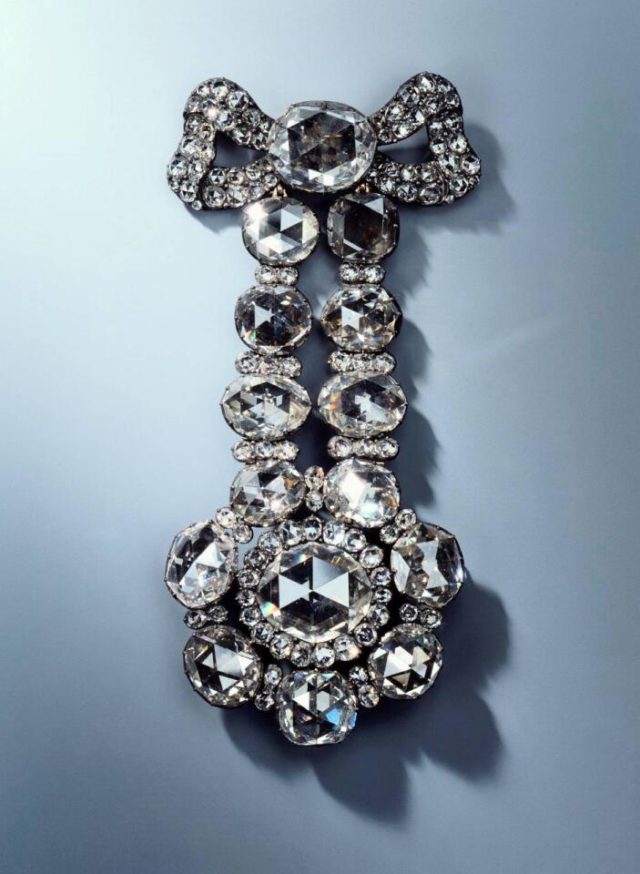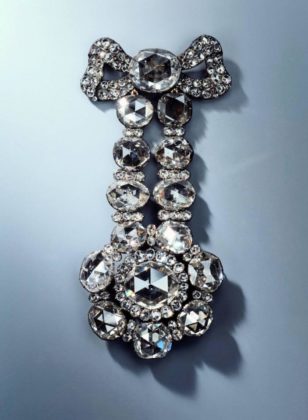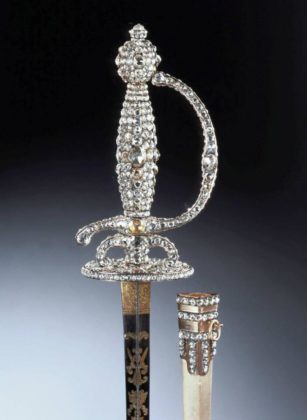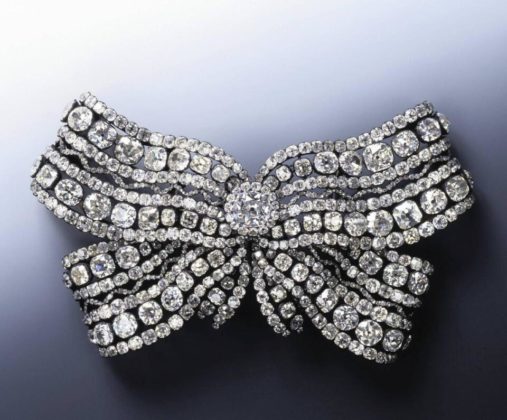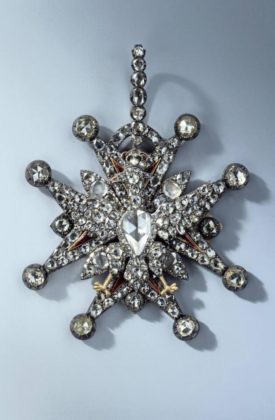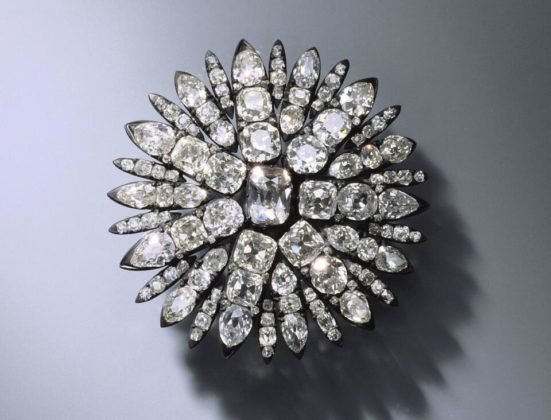“We are talking here of objects of immeasurable cultural value. It’s almost world cultural heritage. There is nowhere else a collection of jewellery in this form, quality and quantity.”
Police arrived minutes after the thieves fled in a getaway car, making off with treasures worth up to £1 billion (R16 billion).
The three sets of 18th century jewellery stolen include a “breast bow” with more than 650 diamonds, weighing 600 carats, and a unique sword with a diamond-encrusted handle and scabbard which dates back to 1719.
The raid on one of the world’s oldest and richest museums appeared to have been meticulously planned.
The intruders are first thought to have set fire to an electricity junction box in tunnels below a nearby bridge shortly before 5am, disabling the museum’s alarm systems and plunging the area into darkness.
They then prised open part of a wrought-iron grille on one of the ground-floor windows before smashing the glass behind it. Security sources said they had to have been “strikingly small” to fit through the tiny gap in the grille.
CCTV images from inside the vault captured the two hooded thieves repeatedly smashing display cabinets with axes or sledgehammers before the reinforced glass eventually shattered.
After grabbing their loot, the thieves escaped from the museum the way they came in, before driving off in a getaway car parked outside a nearby cafe.
Police were alerted at 5.04am by unarmed security guards who had spotted the men on security cameras, but arrived too late. Detectives later found an Audi on fire in an underground car park a few kilometres away and are investigating whether it is the same car.
Museum officials described the stolen jewellery as having “immeasurable cultural value” and begged the thieves not to dismantle it or melt it down.
Asked about the estimated £1 billion value, museum director Marion Ackermann said: “We’re dealing with priceless artistic and cultural treasures. We cannot give a value because it is impossible to sell.”
Dirk Syndram, of the Dresden State Art Collections, revealed around 100 pieces of jewellery had been stolen in total.
The art historian said: “We are talking here of objects of immeasurable cultural value. It’s almost world cultural heritage. There is nowhere else a collection of jewellery in this form, quality and quantity.”
The three sets of jewellery were among ten made for Augustus the Strong, the elector of Saxony from 1694 to 1733. Augustus, who was also King of Poland for much of that time, established Dresden as a cultural centre and founded the Royal Palace. He competed with France’s King Louis XIV to assemble the most extravagant jewellery and show off his wealth.
The baroque collection contains around 4 000 items of jewellery and other treasures decorated with gold, silver, ivory and pearl. They include a figure of a Moor studded with emeralds and a 648-carat sapphire – a gift from Russia’s Tsar Peter the Great – and the largest blue sapphire in the world, worth around £23 million. One of the most valuable treasures – a 41-carat naturally green diamond called the Dresden Green – is currently out on loan in New York.
In 2010 the then museum director Martin Roth said the Green Vault was “as secure as Fort Knox”. He said the vault was protected by “invisible” security systems, but warned the biggest danger was information leaking from insiders.
Three of the vault’s eight rooms were obliterated during the Allied bombing of Dresden in February 1945. The collection was returned to its original home only after the vault was rebuilt and opened to the public in 2007.
The heist was described by the German press as the “largest art theft in post-war history”.
It would comfortably surpass the previous biggest, which saw two thieves disguised as police officers steal 13 works of art worth a combined £400 million from a Boston museum in 1990.

